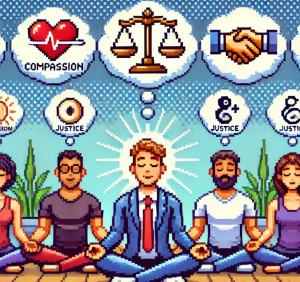
How Fantasy Worlds and Authenticity Shape Adolescent Media Preferences
In a world where screens dominate almost every facet of adolescent life, the 2024 Teens and Screens report offers an insightful look into how American teens and young adults navigate the ever-expanding universe of digital media. From the rise of fantasy content to their desire for more authentic portrayals in media, this report sheds light on the complex relationship between youth and the stories they choose to consume. For public health practitioners and researchers, understanding these patterns can reveal the broader social-emotional needs of today’s adolescents, helping to inform media policies and programming that positively influence young lives.
The Allure of Fantasy: A Growing Escape from Reality
The 2024 report highlights a significant rise in adolescents’ preference for fantasy worlds, with 36.2% indicating that this genre is what they most want to see. This marks a striking 56% increase from last year, as teens continue to seek refuge in stories far removed from their everyday realities. But why is fantasy so captivating for today’s youth?
The answer lies in their desire for escape. Adolescents today face unprecedented challenges, from global pandemics to social and political unrest. These issues have exacerbated the mental health crisis, with more teens than ever before grappling with anxiety, depression, and a sense of uncertainty about the future. Fantasy, with its dragons, magic, and distant realms, offers an alternative world where the rules are different, and victory often comes to those who are brave and resilient.
This trend is particularly pronounced among LGBTQIA+ adolescents, who rank fantasy and superhero content among their top choices. For these teens, fantasy worlds can provide a safe space where they can see themselves reflected in diverse characters or even escape the societal pressures and discrimination they face in their daily lives.
As public health practitioners, this growing preference for fantasy suggests a need for interventions that address teens’ desires for escape in more constructive ways. While fantasy can be a healthy way to cope with stress, it’s essential to ensure that teens also have access to support systems that help them deal with the realities they’re trying to avoid.
Hope and Uplifting Content: A Persistent Need for Positive Stories
One of the report’s most consistent findings is adolescents’ continued desire for hopeful, uplifting content where characters “beat the odds.” For the third year in a row, this genre topped the list, with teens craving stories that offer inspiration and demonstrate resilience. This preference for optimism is particularly important to note in a time where negativity and crisis often dominate the news and social media.
The emphasis on hope and triumph resonates across demographic groups. Whether through tales of unlikely heroes or real-life accounts of perseverance, adolescents are looking for content that mirrors their need for validation and empowerment. They want to see characters overcoming challenges that they, too, might face in their lives, from mental health struggles to navigating complex social dynamics.
This finding holds immense potential for public health campaigns and educational programming. By creating content that incorporates these themes of resilience and hope, media producers can foster a sense of empowerment in young viewers, encouraging them to adopt positive coping strategies and reinforcing the idea that challenges can be overcome.
The Authenticity Paradox: Social Media vs. Movies and TV
Interestingly, while adolescents increasingly seek out fantasy in movies and TV shows, they still crave authenticity in the media they consume. Social media, particularly platforms like YouTube and TikTok, was ranked as the most authentic media space by 31.1% of teens, beating out traditional TV and even streaming platforms. What makes social media so appealing to this generation is its rawness—its ability to showcase real people living real lives, unfiltered and unpolished.
However, there’s a disconnect when it comes to how social media is portrayed in movies and TV shows. Nearly half of the adolescents (45.1%) reported cringing at the way social media is depicted on screen, finding these portrayals far from the reality of their experiences. Teens are seven times more likely to agree than disagree that creators could benefit from consulting with them to better represent how social media is used in real life.
For public health communicators, this presents both a challenge and an opportunity. If we are to reach adolescents through media, we must do so with an authenticity that reflects their lived experiences. This means collaborating with young people to ensure that the content we produce resonates with them on a deeper level, whether in campaigns about mental health, substance use prevention, or promoting healthy lifestyles.
Friendship Over Romance: The Shift in Relationship Priorities
Another notable trend from the report is adolescents’ growing preference for content focused on platonic relationships and friendships rather than romantic storylines. In 2024, 63.5% of adolescents expressed a desire for more media that highlights friendships, a significant jump from 51.5% in 2023. This shift signals a broader cultural change where young people are increasingly prioritizing social bonds and community over romantic connections.
This trend is particularly important in the context of adolescent development. Friendships during this stage are critical for emotional support and identity formation. Adolescents often rely on their peer groups as they navigate the complexities of growing up, and seeing these relationships portrayed authentically on screen can provide validation for the importance of these bonds.
Public health programming can leverage this trend by promoting content that strengthens social connections and highlights the value of community. Whether through school-based programs or social media campaigns, emphasizing the importance of friendships can help build resilience and support systems for young people as they face the challenges of adolescence.
Join the Conversation
What types of media do you think best represent the realities of adolescence? How can we use fantasy and social media to promote positive mental health?
Be Part of the Change – Get Weekly Updates!
Stay informed and connected. Subscribe for free and share this blog to make a difference in public health with others. If you liked this blog, please share it! Your referrals help This Week in Public Health reach new readers.



